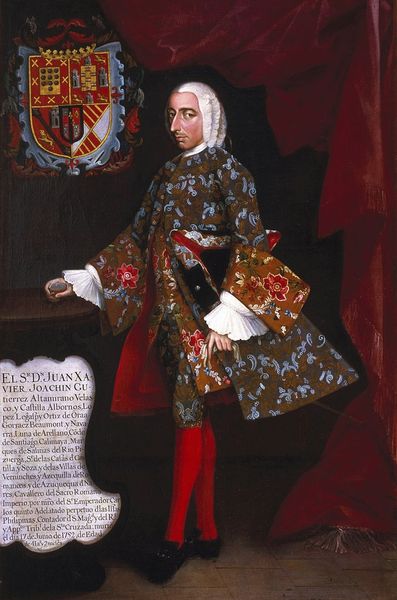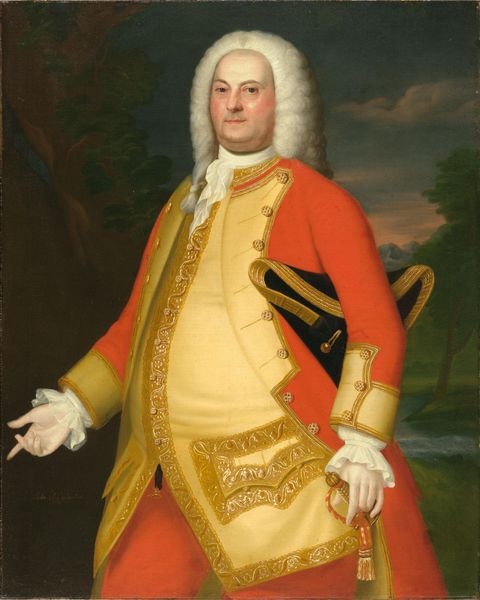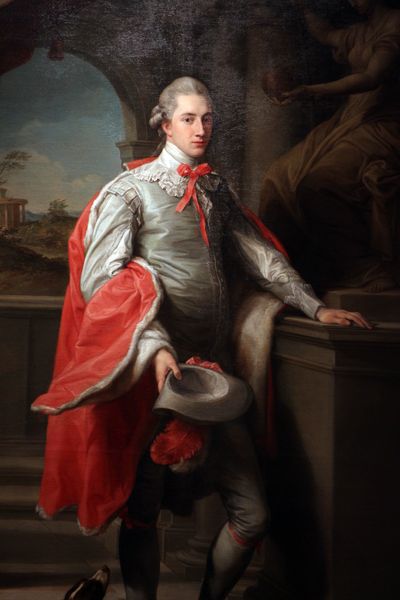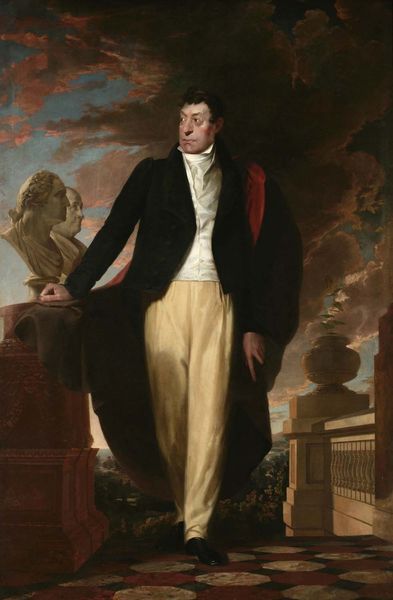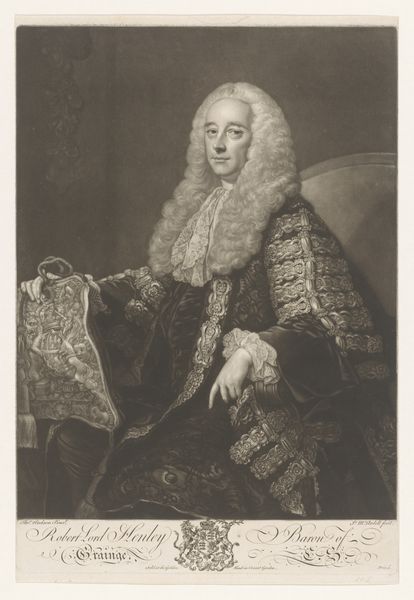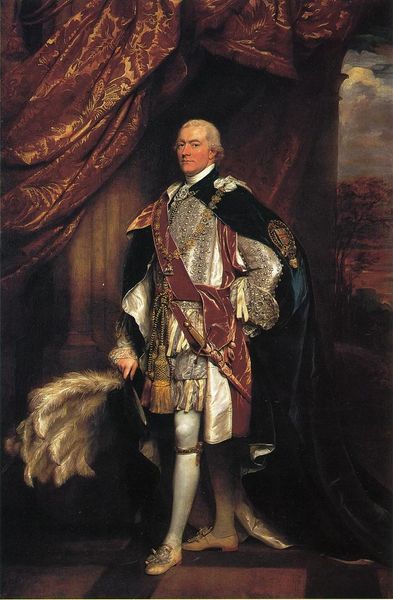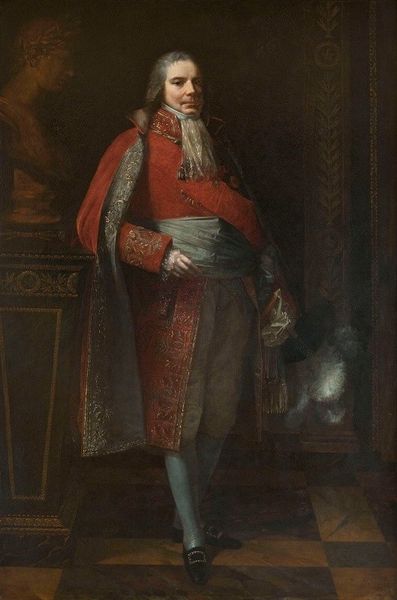
painting, oil-paint
#
portrait
#
figurative
#
painting
#
oil-paint
#
history-painting
#
academic-art
Copyright: Public Domain: Artvee
Editor: This is Gilbert Stuart's 1789 portrait of Baron FitzGibbon, rendered in oil paint. I find the theatrical robes and prominent wig create a rather imposing figure, almost intimidating. What do you see in this piece, beyond the surface representation? Curator: I see layers of coded communication embedded in the visual rhetoric of power. Consider the wig, not merely as fashion, but as a symbol of authority, of legal weight and judgment. It visually connects the wearer to a lineage of lawgivers and reinforces societal structures. Do you notice how its stark whiteness contrasts with the baron's dark attire? Editor: Yes, it definitely draws your eye. So, it’s about contrast as a symbol? Curator: Precisely. And more broadly the contrasting colors represent something deeper than aesthetic appeal, a visualization of hierarchies. Then we look to the table. What sits upon it next to him? Editor: It looks like the crown jewels. Curator: Symbolism is embedded here, in this work that tells us how symbols endure and evolve to communicate the nature of power and legitimacy. He's not just a man, but an embodiment of the very concept of the crown, the law, order. Editor: It's fascinating how much meaning can be packed into seemingly simple visual elements. I'll definitely look at portraits differently from now on. Curator: Indeed, it's like peeling back the layers of an onion. Each symbol offers insight into cultural memory and continuity.
Comments
No comments
Be the first to comment and join the conversation on the ultimate creative platform.

